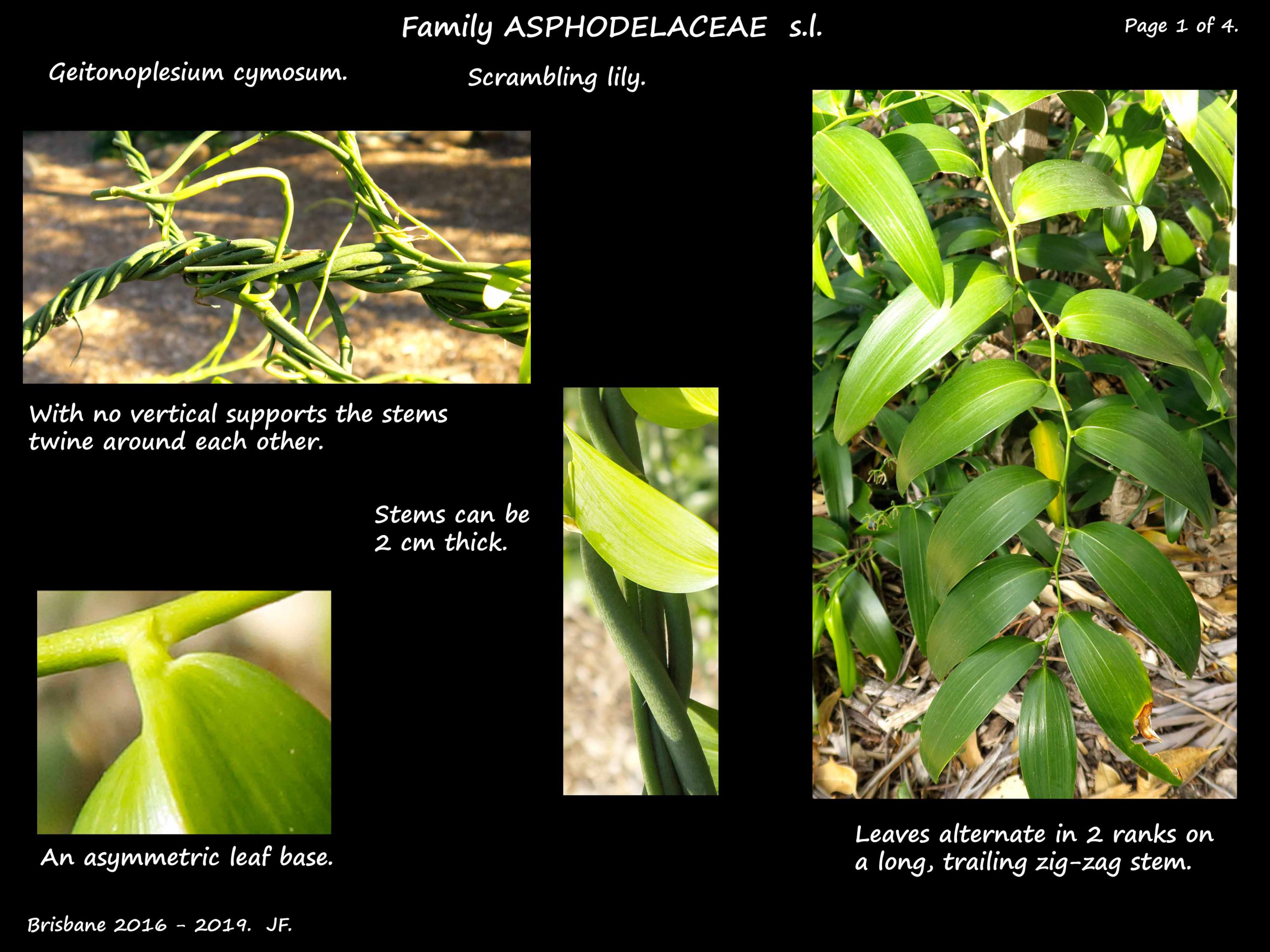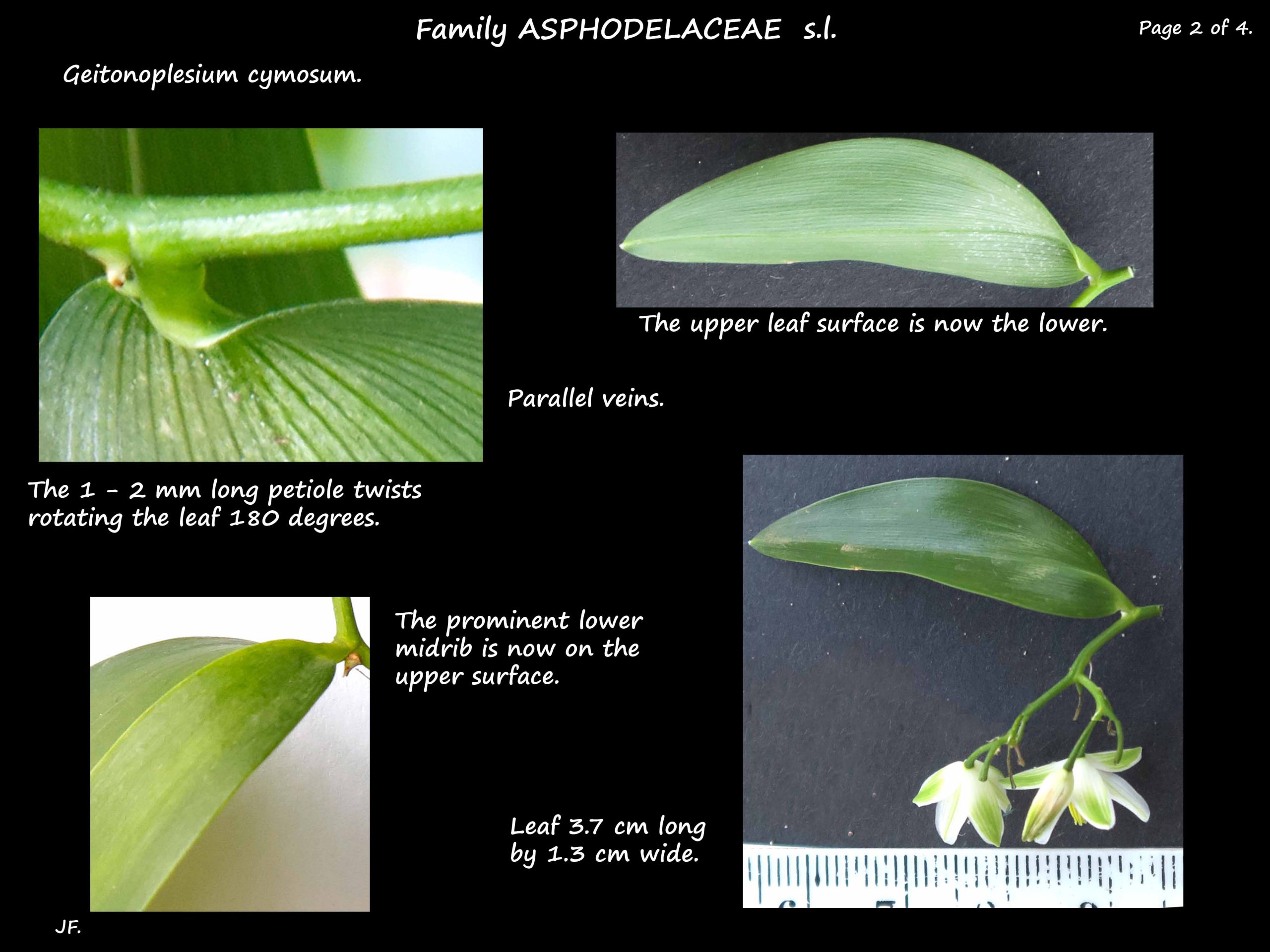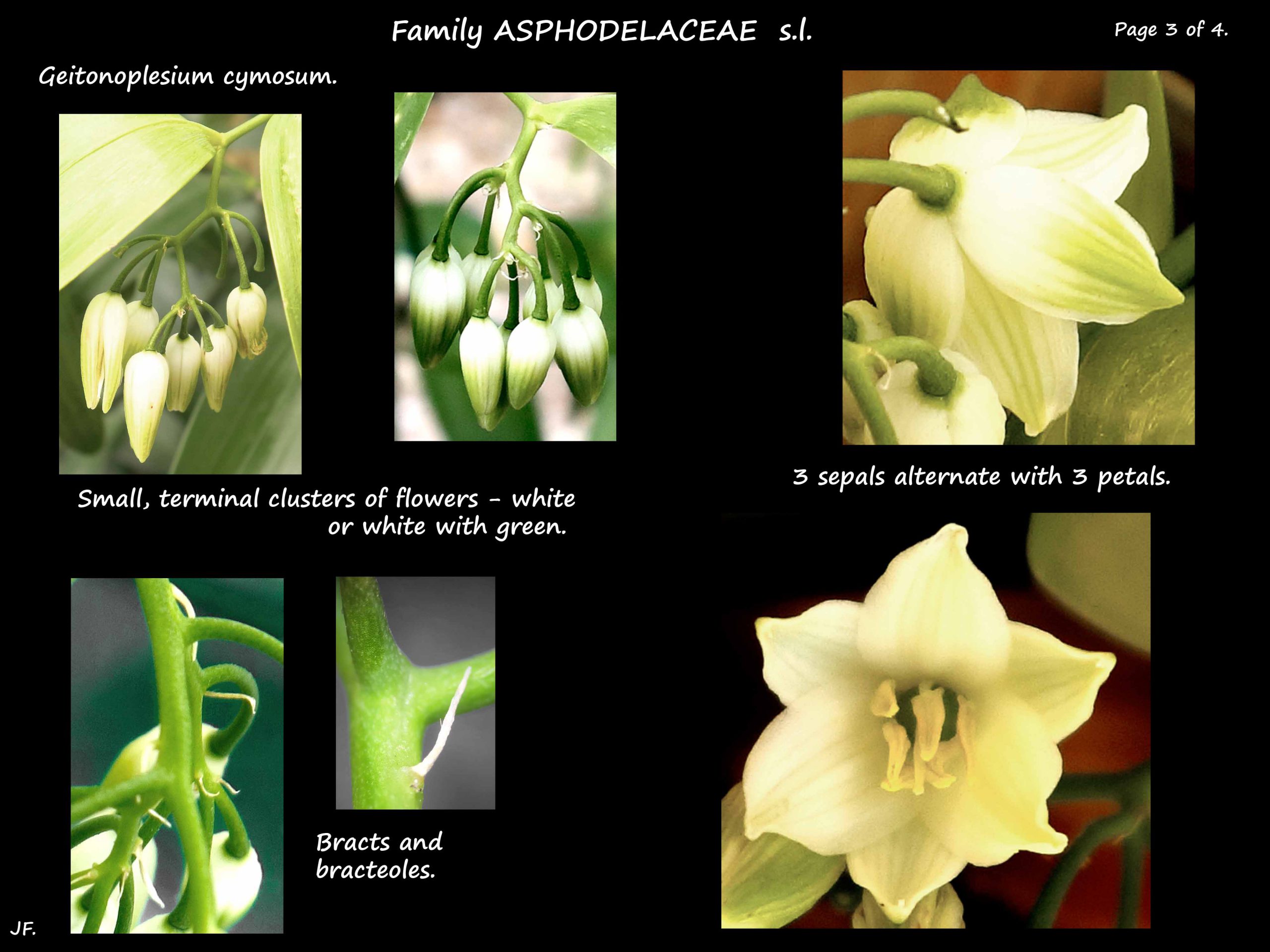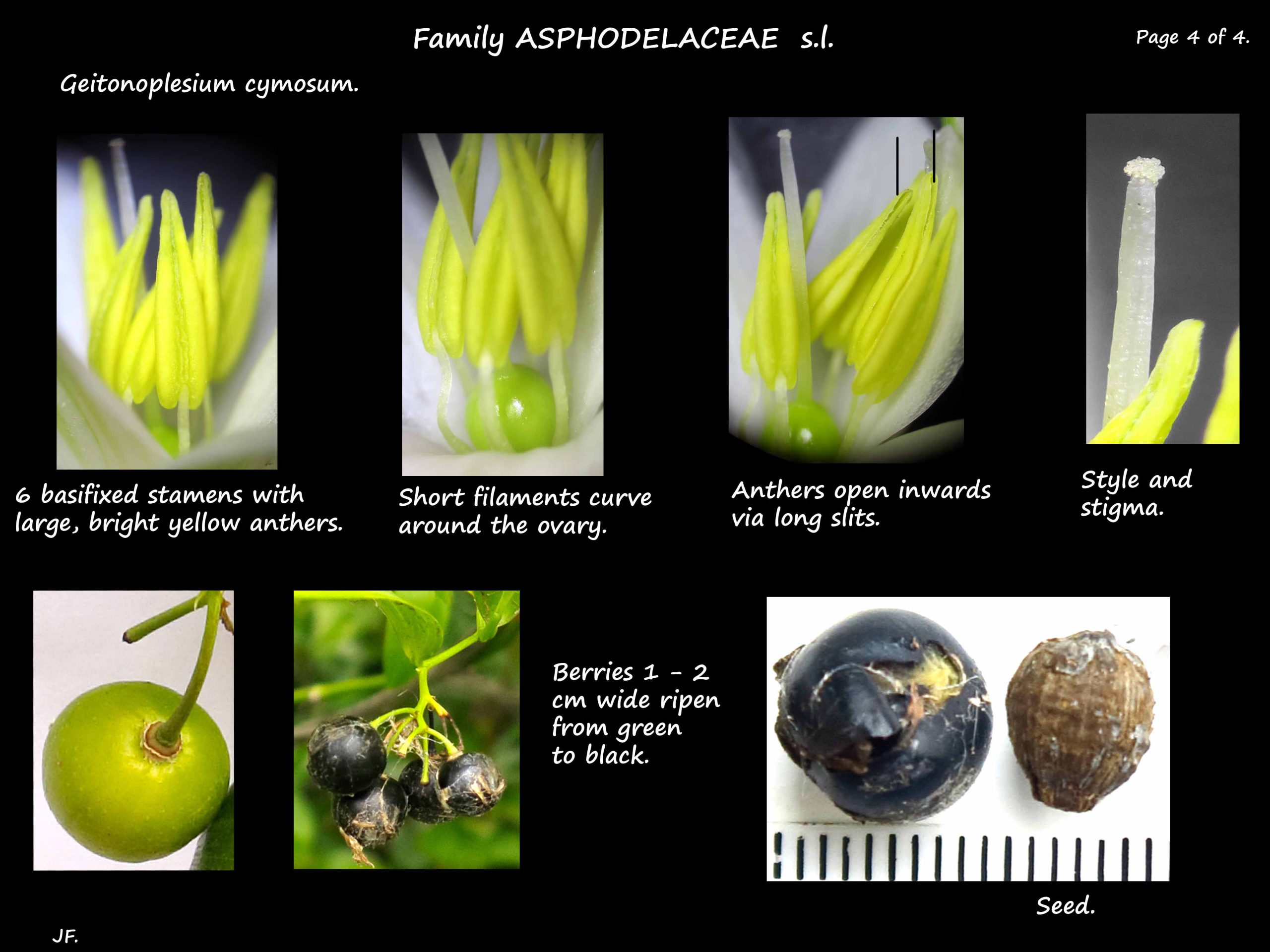Geitonoplesium cymosum.
Family Asphodelaceae. > Subfamily Hemerocallidoideae.
The Scrambling Lily, found in Queensland, is the only species in the genus.
An evergreen vine climbing or scrambling by using twining stems.
The green stems can be up to 8 or 10 m long and 2 cm thick.
The roots form tubers.
Seedlings initially have 1 or 2 cataphylls about 11 cm long.
(Cataphylls are modified, basically non-photosynthetic leaves.)
These are replaced by the first oblong-lanceolate true leaves.
The stiff, green adult leaves are in 2 ranks on a zig-zag stem.
The petioles, 1 to 2 mm long, have a grooved upper surface.
They are twisted so the blade surfaces are reversed.
The twist makes the prominent midrib on the lower surface appear on top.
Veins are parallel.
The leaves are variable but mostly linear to a narrow lanceolate shape.
They are 8 to 10 cm long and 1 to 2.5 cms wide with an oblique base.
Terminal inflorescences are small clusters of flowers.
There are small, narrow bracts and bracteoles.
Flowers 10 to 20 mm long are on stalks about 6 mm long.
The 3 sepals are 7 mm long and alternate with the 3 similar petals.
Sepals and petals are white with green areas and lines on the outsides.
They can also be slightly pink or mauve.
There are 6 free stamens with white filaments that curve around the ovary.
The bright yellow basifixed anthers are about 3.5 mm long.
The superior, green, 2 to 3 mm ovary has a 4 mm long apical style.
There is a small, globular stigma.
The fruit are globular berries up to 2 cm across with a few seeds.
They ripen from dark green to black.
J.F.





